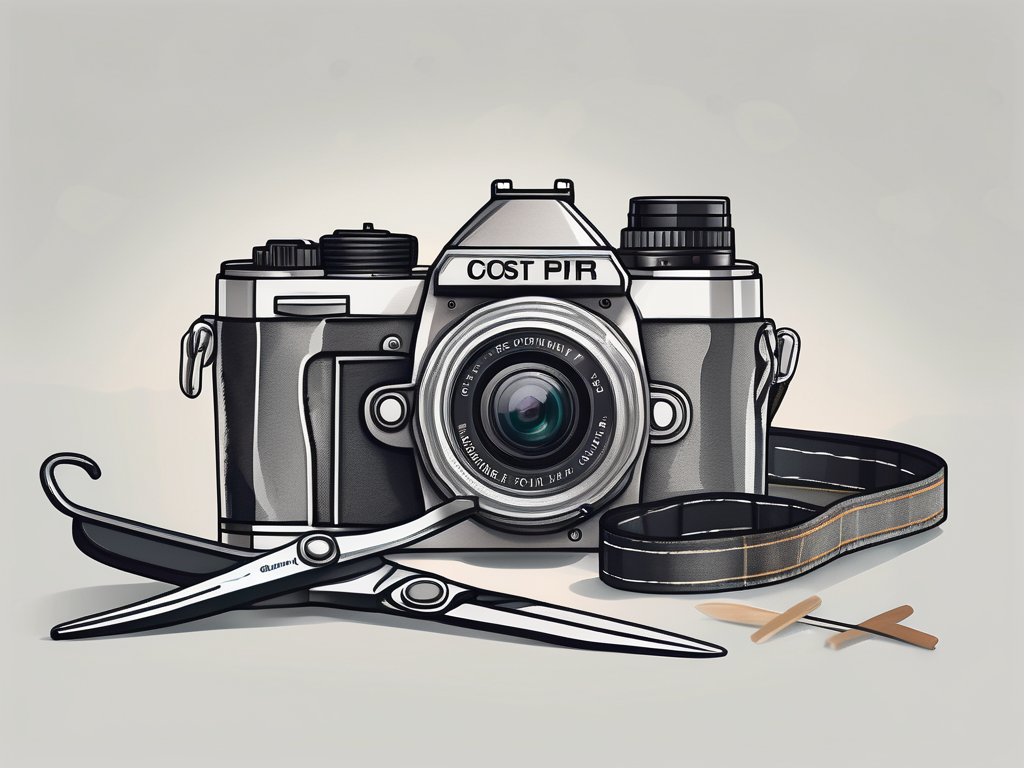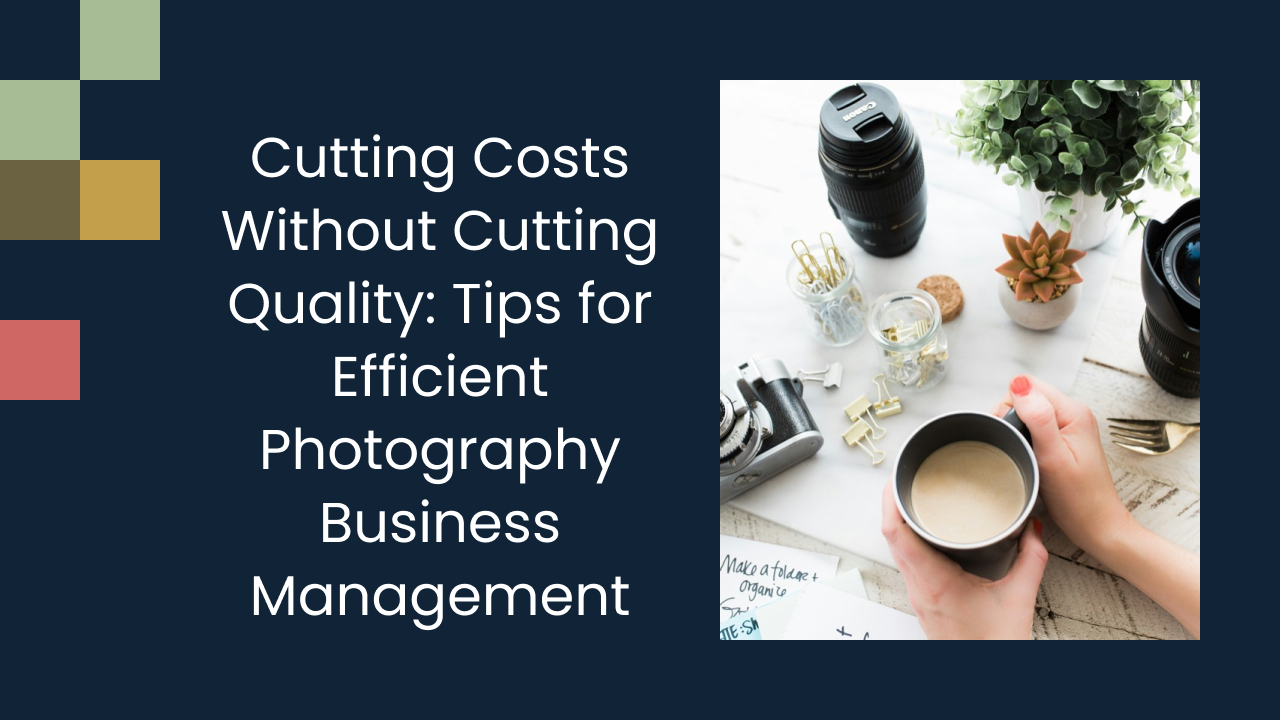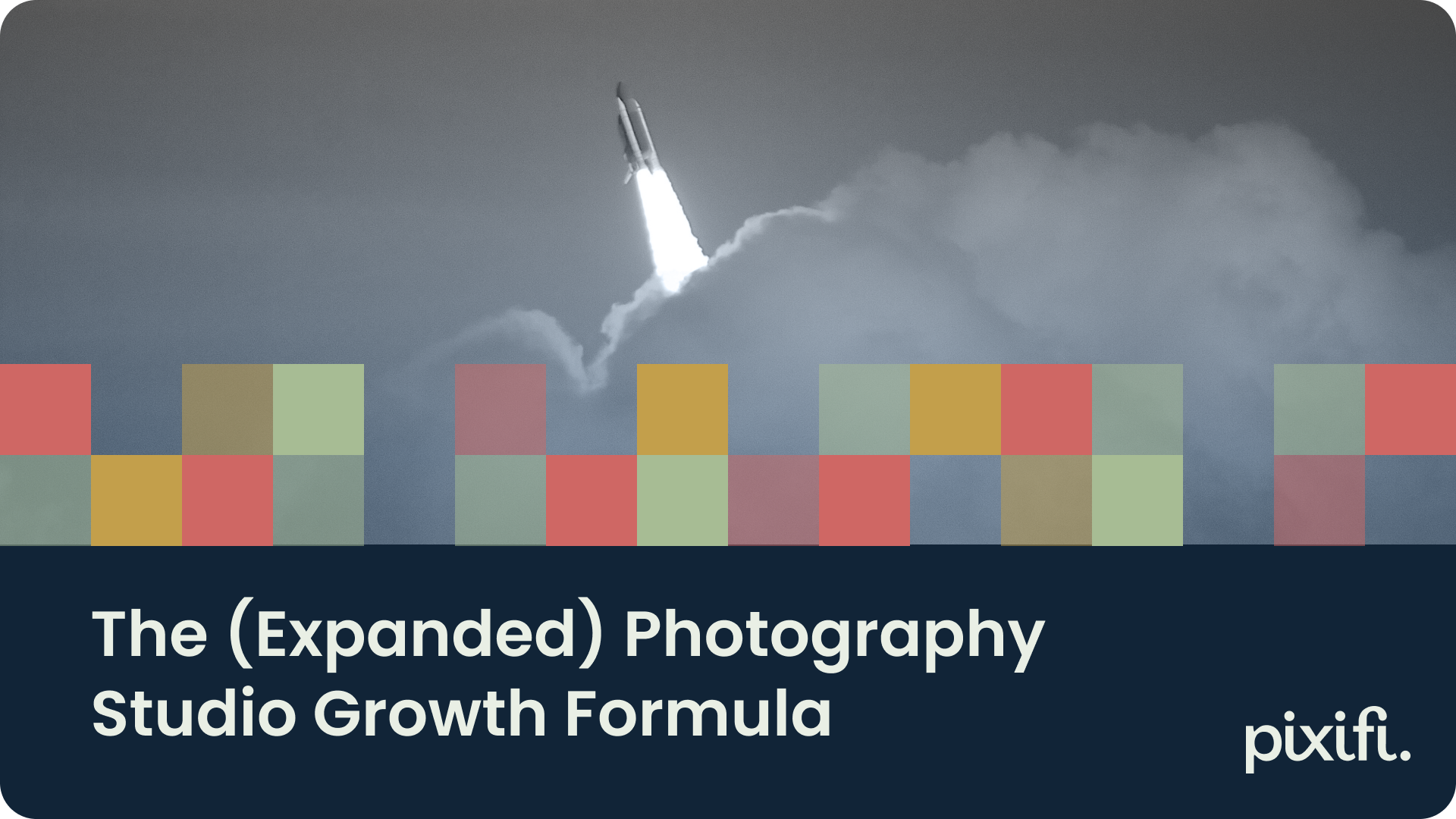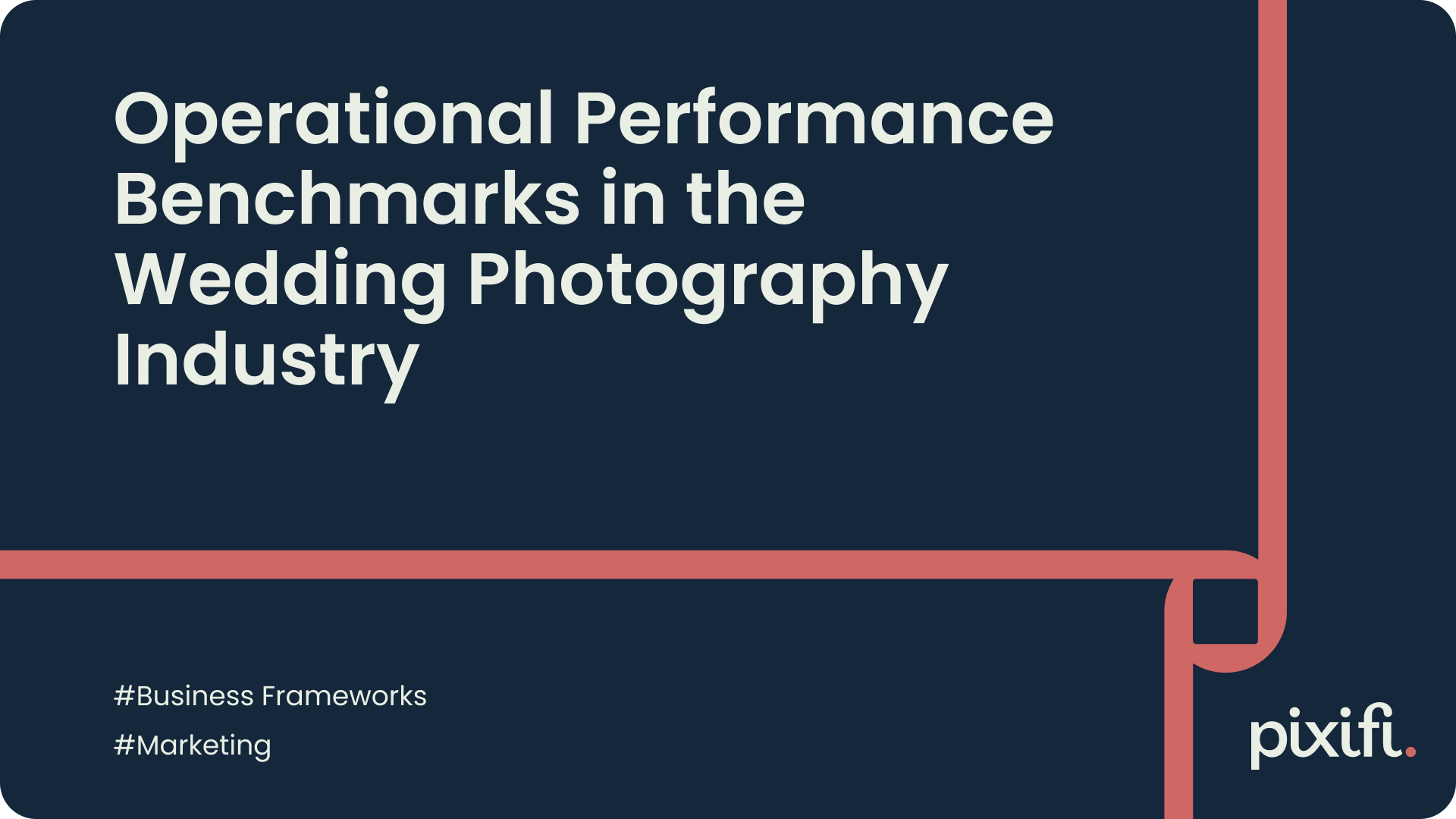Cutting Costs Without Cutting Quality: Tips for Efficient Photography Business Management

In today's competitive photography industry, it's essential for professionals to find ways to cut costs without compromising quality. Efficient photography business managementis the key to longevity and success. By understanding the balance between cost and quality, streamlining your workflow, making smart equipment investments, implementing effective marketing strategies, and reducing overhead costs, you can maximize your profits while maintaining the high standards that your clients expect.
Understanding the Balance Between Cost and Quality
In photography business management, it's crucial to find the sweet spot between cost and quality. While it may be tempting to cut expenses wherever possible, it's important not to compromise the quality of your work. Striking the right balance ensures that your clients receive the value they expect while keeping your expenses in check.
One way to achieve this balance is by investing in high-quality equipment. While it may seem like a significant upfront cost, investing in top-of-the-line cameras, lenses, and lighting equipment can greatly enhance the quality of your work. These tools allow you to capture stunning images with exceptional clarity and detail, making your work stand out from the competition.
Another aspect to consider is the importance of ongoing education and skill development. By staying up-to-date with the latest photography techniques and trends, you can continuously improve the quality of your work. This not only adds value to your services but also allows you to charge higher rates, ultimately offsetting the initial investment in your education.
The Importance of Efficiency in Photography Business Management
Efficiency is the cornerstone of cost-effective photography business management. By optimizing your processes, you can save time and resources, ultimately reducing your expenses. Efficient workflows also enable you to deliver your work to clients promptly, enhancing their satisfaction and increasing the likelihood of repeat business and referrals.
One way to improve efficiency is by implementing a streamlined editing process. By utilizing software tools and presets, you can automate repetitive tasks and achieve consistent results. This not only saves time but also ensures that your editing is of the highest quality, maintaining your professional standards.
Additionally, effective time management is crucial in photography business management. By carefully planning and scheduling your shoots, you can maximize your productivity and minimize unnecessary downtime. This allows you to take on more clients and generate more revenue without compromising the quality of your work.
Identifying Areas of Potential Savings Without Quality Loss
As a photography business owner, it's essential to identify areas where you can save money without compromising the quality of your services. This requires a careful analysis of your expenses and a critical evaluation of what is truly necessary for your business. By cutting out unnecessary expenditures or finding more cost-effective alternatives, you can reduce costs without sacrificing excellence.
One area to consider is your studio space. While having a dedicated studio can be beneficial, it can also be a significant expense. Depending on your photography style, you may be able to utilize natural light and outdoor locations instead, reducing the need for a costly studio rental. This allows you to allocate more funds towards other aspects of your business, such as marketing or equipment upgrades.
Another way to save money without compromising quality is by leveraging strategic partnerships. By collaborating with other professionals in the industry, such as makeup artists or event planners, you can offer bundled services that provide added value to your clients. This not only allows you to share expenses but also expands your network and potential client base.
Streamlining Your Photography Workflow
An efficient photography workflow is the foundation of a successful business. By optimizing your shooting process and implementing efficient post-production techniques, you can save time, deliver better results, and reduce costs.
When it comes to optimizing your shooting process, there are several key factors to consider. Proper planning and preparation are essential. This includes scouting locations, understanding your clients' needs and expectations, and creating a detailed shot list. By having a clear vision of what you want to achieve, you can minimize wasted time and ensure that you capture the shots you need.
Efficient equipment setup is another crucial aspect of streamlining your photography workflow. Familiarize yourself with your gear and practice setting it up quickly and efficiently. This will help you save valuable time during shoots and prevent any delays or technical issues that may arise. Additionally, consider investing in equipment that is lightweight and portable, allowing you to move swiftly between different shooting locations.
Effective communication with your clients is also vital for optimizing your shooting process. Take the time to understand their vision and expectations, and maintain open lines of communication throughout the entire process. By doing so, you can ensure that you are on the same page and avoid any misunderstandings that could lead to reshoots or wasted resources.
While optimizing your shooting process is crucial, efficient post-production techniques are equally important. Post-production can be a time-consuming and resource-intensive phase of photography, but there are ways to cut costs without sacrificing quality.
One strategy is to explore software tools that automate repetitive tasks. For example, batch editing software can help you apply consistent adjustments to multiple images simultaneously, saving you valuable time. Similarly, retouching software can streamline the process of removing blemishes or enhancing the overall look of your images.
Another option to consider is outsourcing certain aspects of post-production to professional retouchers. By delegating tasks such as color correction or advanced retouching to experts, you can free up your time to focus on more revenue-generating activities, such as marketing or client acquisition.
In conclusion, streamlining your photography workflow is essential for maximizing efficiency and reducing costs. By optimizing your shooting process through proper planning, efficient equipment setup, and effective communication, you can minimize retakes and wasted resources. Additionally, exploring software tools and outsourcing post-production tasks can help you save time and deliver high-quality results. Implementing these strategies will not only benefit your business but also enhance your overall photography experience.
Smart Equipment Investments
In photography, equipment plays a significant role in delivering high-quality results. However, investing wisely in equipment is essential to avoid overspending and maximize your return on investment.
When it comes to photography, the right gear can make all the difference. From cameras and lenses to lighting and accessories, each piece of equipment contributes to the overall quality of your work. But with so many options available, how do you choose the right gear for your business?
Choosing the Right Gear for Your Business
Before investing in new equipment, carefully assess your specific needs as a photographer. Consider the type of photography you specialize in, the range of services you offer, and your target market's expectations. Are you a portrait photographer who needs a versatile lens for capturing stunning close-ups? Or perhaps you're a landscape photographer who requires a wide-angle lens to capture the beauty of nature. By understanding your unique requirements, you can make informed decisions and invest in gear that aligns with your business objectives.
Furthermore, it's important to consider the longevity of the equipment you plan to purchase. Will it still meet your needs in the years to come? Technology is constantly evolving, and what may be cutting-edge today could become outdated tomorrow. Look for gear that offers a good balance between current capabilities and future-proof features, ensuring that your investment will continue to serve you well as your business grows.
Another factor to consider is the reputation and reliability of the equipment manufacturer. Research customer reviews, seek recommendations from fellow photographers, and test out the gear whenever possible. Investing in reputable brands known for their quality and durability can save you from the frustration and expense of frequent replacements.
Maintenance and Care to Extend Equipment Life
Proper maintenance and care can significantly extend the lifespan of your photography equipment, reducing the need for frequent replacements. When you invest in expensive gear, it's crucial to protect your investment and ensure its longevity.
One of the simplest yet most effective ways to maintain your equipment is regular cleaning. Dust, dirt, and smudges can affect the performance and image quality of your gear. Use appropriate cleaning tools and techniques recommended by the manufacturer to keep your equipment in optimal condition. Additionally, consider investing in protective cases and bags to safeguard your gear from accidental bumps, drops, and exposure to harsh weather conditions.
Furthermore, don't underestimate the importance of timely servicing and repairs. Regularly schedule maintenance checks with authorized service centers to identify and address any potential issues before they worsen. By staying proactive in the care of your equipment, you can prevent costly breakdowns and ensure that your gear is always ready for the next shoot.
Remember, taking care of your equipment not only saves you money in the long run but also helps maintain the quality of your work. Clients appreciate photographers who consistently deliver exceptional results, and well-maintained gear plays a crucial role in achieving that.
Effective Marketing on a Budget
Marketing is essential for promoting your photography business, but it can quickly become expensive. To stay within your budget while reaching a wide audience, consider low-cost marketing strategies that deliver maximum impact.
Utilizing Social Media for Low-Cost Promotion
Social media platforms provide a cost-effective way to showcase your work and engage with potential clients. Create a compelling social media presence by regularly sharing high-quality images, behind-the-scenes content, and client testimonials. Interact with your followers and participate in relevant photography communities to increase your online visibility.
Building a Referral Network
Word-of-mouth remains one of the most powerful marketing tools. Encourage satisfied clients to spread the word about your services by offering referral incentives or loyalty programs. Develop relationships with other professionals in the wedding and event industry who can refer clients to you in return for referrals to their businesses.
Reducing Overhead Costs
Overhead costs can take a significant bite out of your photography business's profits. By exploring cost-saving measures in areas such as studio space, printing, and storage, you can free up resources for other investments.
Exploring Shared Studio Spaces
Renting dedicated studio space can be expensive, especially for photographers who don't require it on a full-time basis. Consider sharing studio space with fellow photographers or renting on an as-needed basis. Sharing costs with other professionals not only reduces your expenses but also fosters collaboration and networking opportunities.
Going Digital to Save on Printing and Storage
Utilize digital technology to minimize printing and storage costs. Store and archive your images digitally, eliminating the need for physical storage space. Embrace digital delivery methods for clients, reducing printing and postage expenses. Additionally, go paperless with contracts, invoices, and other administrative tasks by utilizing cloud-based document management systems.
By implementing these cost-cutting strategies in your photography business management, you can ensure a sustainable and profitable operation while delivering exceptional quality to your clients. Balancing cost and quality, streamlining workflows, making smart equipment investments, utilizing cost-effective marketing techniques, and reducing overhead costs are all vital steps towards achieving success in the competitive photography industry.




